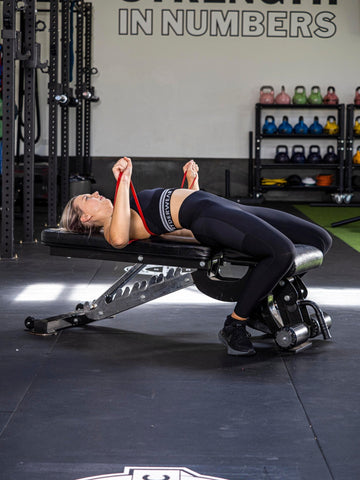Resistance bands can certainly pull their weight. One's fitness program can begin with numerous sets of bicep curls during a recent gym visit. You may find that your personal trainer uses resistance bands, and you may be doubtful at first.
You may think, "Really? Is this flimsy-looking, small, lightweight object going to help strengthen my arms?"
The short answer is yes. You can find your arms burned and twitched like nothing you'd ever felt with typical grip-and-curl dumbbells after a few rounds of speed curls when you did 20 reps as quickly as possible.
However, it's important to note that there's certainly nothing wrong with dumbbells, kettlebells, and barbells—they're also good tools for working out. However, varying the equipment and exercising my muscles in various ways can certainly add thrill to your dull training routine.
Read on to know more about resistance bands.
What Are The Different Types of Resistance Bands?
Resistance bands in Australia come in a variety of shapes and sizes. A single length of flexible material is the most typical variety. A closed-loop, which resembles a big rubber band, is another type. A thin rubber tube with handles is the third type.
When compared to weights, one big advantage of resistance bands is that they give varying amounts of resistance. This is especially useful when deciding between two weights that are either too light or too heavy. Depending on the sort of band you're using, you can boost resistance in a variety of ways:
- When using stretchy material, you can modify resistance by shortening or lengthening the length by adjusting your hand position. Colours can also represent varying resistance levels, from the easiest to the most difficult.
- The rubber band kinds are colour-coded according to their thickness and resistance. The lightest and easiest colour to utilise is yellow, followed by red, green, blue, and black. (Depending on the brand, this may differ.)
- For standing exercises, the tube with handles is frequently utilised. When standing on the tube, you change the resistance by placing your feet near or far apart. Tubes are available in various thicknesses to give less or greater resistance.
Resistance Bands Have A Lot of Advantages
If you follow the published instructions, view videos of band workouts, or learn a band workout from a class or personal trainer, bands are simple to store and utilise.
They can help your muscles prepare for various actions during the day, such as stretching, bending, lifting, or just rising from a chair. Furthermore, band exercise improves muscle power, which helps you avoid falls and damage.
If you have problems gripping or holding dumbbells or need more control when doing exercises, such as healing from an injury or coping with joint pain, bands can help.
3 Excellent Upper-Body Resistance Band Exercises
Are you ready to become a member of the band? Three resistance band exercises strengthen your chest, back, shoulders, and arms. Use a basic elastic material band for these, easily obtained online.
Chest Punches
- Place the workout band around your back and under your armpits to begin. By your shoulders, hold an end in each hand.
- Carefully extend your right arm in front of you on a small diagonal across your torso. Replace the right arm with the left. It's one rep if you do it that way.
- The chest is one of the muscles worked.
- 8 to 12 reps
Pull-Down With Two Hands
- The starting position is holding a band over your head with your hands about 12 to 16 inches apart.
- Stretch the band by bending your elbows and pulling your hands down to chest level. Return your arms to the beginning position by slowly raising them overhead.
- Back, shoulders, and other muscles were exercised.
- 8 to 12 reps
Bicep Curls
- Starting position: To help you balance, place the middle of the band beneath one foot and the opposite foot slightly behind it. Using each hand, hold one end of your resistance band with your arms down at your sides and palms facing forward.
- Bend your elbows and elevate your hands toward your shoulders as you walk. Maintain a static position with your upper arms and elbows close to your torso. Return to the starting position slowly.
- Front of upper arms (muscles exercised)
- 8 to 12 reps
Conclusion
Weights aren't required for a successful workout, but they certainly help. Wherever you are, the mentioned routines can help you create an upper-body resistance band workout. A resistance tube with handles is used for these exercises. You can, however, customise each exercise by using different types of Australian fabric resistance bands.
Our objective at POWERBANDS® is to improve the quality of our customers' lives by encouraging them to move. Buy resistance bands in Australia for your next session!








